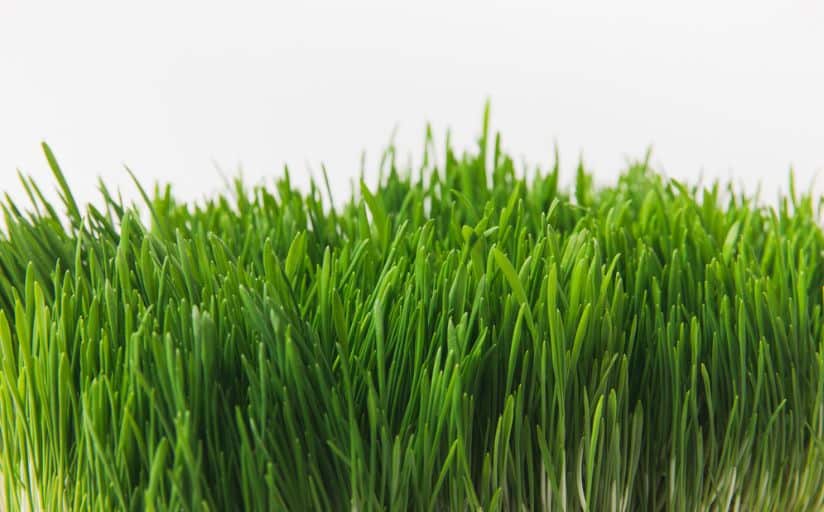Have you ever thought, “My grass is not dense. What’s going on?!” A thin, patchy lawn can be frustrating and even embarrassing. But with the right care, you can turn your thin grass into a thick, lush lawn. Let’s go over what might be causing your grass to struggle and how you can fix it.
(If you make a purchase using the links in this post, we may earn a commission.)
Why Isn’t My Grass Dense?
Thin grass happens for a lot of reasons. Figuring out why your grass is not thick is the first step to fixing it.
- Soil Quality: Compacted soil, low nutrients, or unbalanced pH can weaken grass.
- Water and Fertilizer: Overwatering, underwatering, or even the wrong fertilizer can cause thin grass.
- Too Much Shade: Lack of sunlight keeps grass thin.
- Weeds and Pests: Weeds compete for nutrients, and pests like grubs or insects can damage roots, leading to sparse grass.
- Poor Mowing Practices: Cutting grass too short can stress it and weaken its growth.

How To Make Grass Thicker
Once you know why your grass is not dense, it’s time to tackle the problem with some simple but effective steps.
Start With the Soil
Healthy grass starts with healthy soil. Aerating your lawn is a great first step because it breaks up compacted soil, making it easier for air, water, and nutrients to reach the roots. Just one aeration a year, either in the spring or fall, can make a noticeable difference in how your grass grows.
After aerating, give your lawn a boost by spreading a layer of topdressing, like a mix of compost and soil. This not only feeds your grass but also creates the perfect environment for seed germination if you’re planning to overseed.
Water the Right Way
A good rule of thumb is to give your lawn about 1 to 1.5 inches of water each week, including any rainfall. Deep, infrequent watering is the way to go because it encourages the roots to grow deeper, which helps your grass grow dense and strong. Usually, watering once or twice a week is enough, but it depends on your soil and climate. Try to water in the early morning so less water evaporates and your grass has time to dry before evening. This helps prevent fungal problems. Steer clear of shallow, frequent watering. It might seem helpful, but it actually weakens the roots and can leave your lawn looking thin.
Feed Your Lawn
https://www.youtube.com/watch?v=4IC5ifIN4UM&list=PL25ViAaTv5737jsjtDHZph_-9XuwKCpZw&index=8
Grass needs the right nutrients to grow thick and dense. A soil test can tell you exactly what your lawn is missing so you can choose a fertilizer that matches its needs. Look for a balanced fertilizer with nitrogen, phosphorus, and potassium, which are key nutrients for strong grass. Slow-release fertilizers are a great option because they provide a steady supply of nutrients over time, promoting even growth without burning the grass.
Feeding your grass regularly, especially during its active growing season, will help it grow denser and more vibrant. But keep in mind that more fertilizer is not better. Follow the package’s application instructions carefully because over-fertilizing can harm your lawn and lead to issues like excessive growth or nutrient runoff.
Let the Sunshine In
If shade is making your lawn look thin, start by trimming back any overhanging tree branches to let more light reach the grass. It’s a simple fix that can make a big difference in how your lawn grows.
For those areas that always stay shady, try planting shade-tolerant grass varieties, like fine fescue or St. Augustine grass. These grasses are designed to thrive with less sunlight, giving you a better chance at a denser lawn, even in spots that don’t get much light.

Mow Properly
You may be mowing wrong. Start with sharp blades to get a clean cut. Dull blades tear the grass and make it more vulnerable to disease. Mow when the grass is dry to avoid clumping, and stick to the “one-third rule” by never cutting off more than a third of the grass at once. These steps help keep your lawn dense by preventing stress on the roots.
Finally, adjust your mower height based on your grass type. For cool-season grasses like Kentucky bluegrass or fescue, aim to keep the height between 2.5 to 4 inches. Warm-season grasses like Bermuda or zoysia should stay around 1 to 2 inches.
If you’re unsure about what type of grass you have, start by setting your mower to the higher end of the range to avoid scalping the lawn, which can stress the grass and invite weeds.
Your Grass Can Be Dense With Proper Care
If your dream is to have dense grass your neighbors will be jealous of, you can definitely achieve it! With a bit of effort and the right strategies, you can transform your yard into the lush, vibrant space you’ve always wanted. By paying attention to your grass’s needs, you’ll enjoy thick, healthy growth that really stands out.

